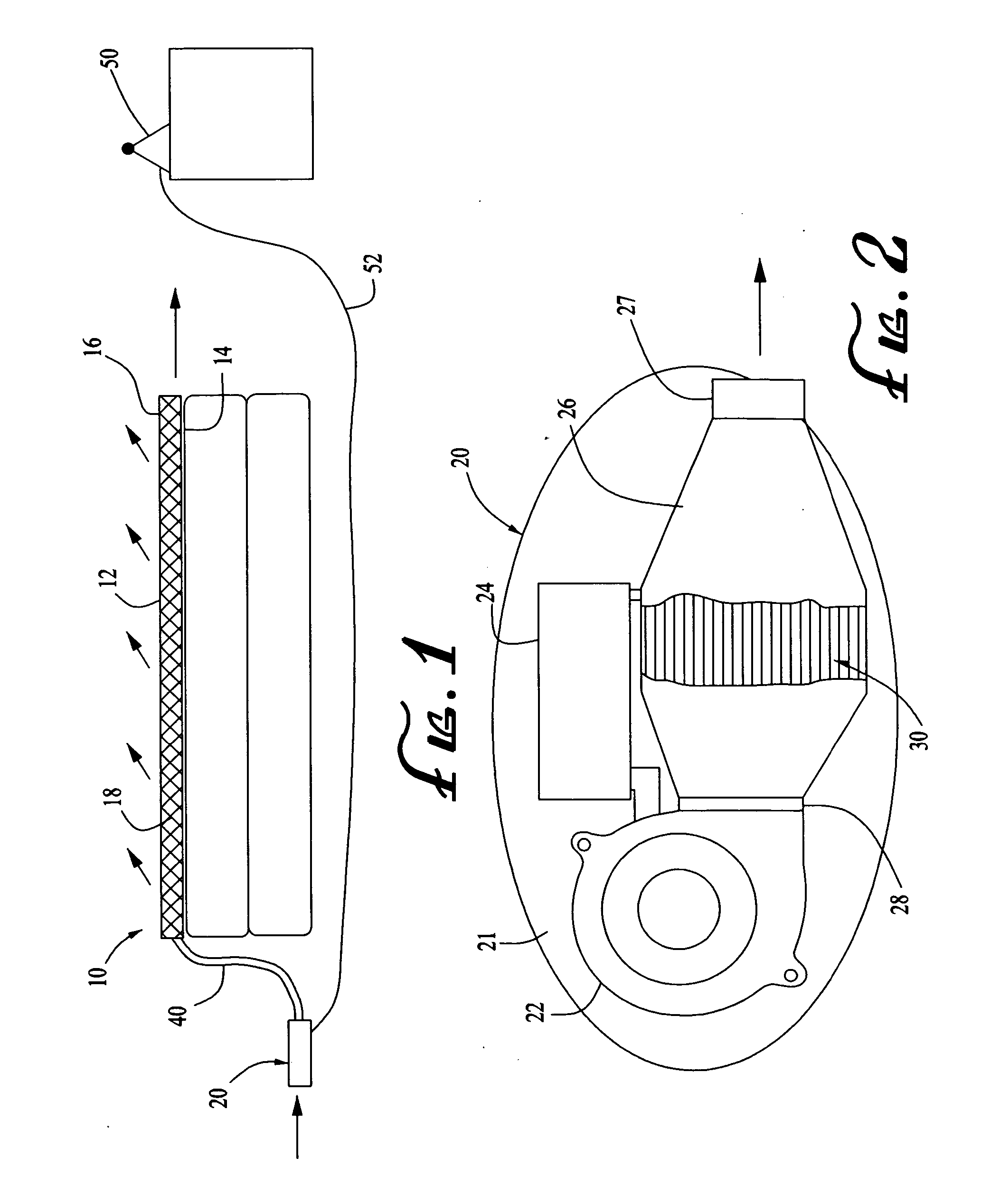Convective cushion with positive coefficient of resistance heating mode
a cushioning and coefficient technology, applied in the field of temperature controlled mattress pads, can solve the problems of short circuit, drop in heating efficiency, and longer heating time to reach an adequate level, and achieve the effects of reducing mechanical stress, facilitating wireless communication, and reducing short circui
- Summary
- Abstract
- Description
- Claims
- Application Information
AI Technical Summary
Benefits of technology
Problems solved by technology
Method used
Image
Examples
Embodiment Construction
[0071] Initially referring to FIG. 1, shown is the convective cushion 10 placed upon a conventional mattress, including a plenum 12 constructed of a bottom surface 14 secured around its perimeter to a top surface 16. The bottom surface 14 is preferably air impervious, although placement on a conventional mattress may render an air permeable surface largely impervious. The top surface 16 is air-permeable although sufficiently impervious that a greater air pressure can be maintained inside the enclosed space.
[0072] Inside the plenum 12 is tubular spacer material 18 or equivalent. U.S. Pat. Nos. 6,085,369 and 6,263,530 pioneered the use of such tubular spacer fabric 18 as an air flow structure for seats, mattresses, mattress pads, and other articles of furniture that can be sat on or laid down upon. Although the preferred embodiment of this invention utilizes the same tubular spacer fabric 18 as described in the issued Feher '369 and '530 patents, it is possible to utilize other air f...
PUM
 Login to View More
Login to View More Abstract
Description
Claims
Application Information
 Login to View More
Login to View More - R&D
- Intellectual Property
- Life Sciences
- Materials
- Tech Scout
- Unparalleled Data Quality
- Higher Quality Content
- 60% Fewer Hallucinations
Browse by: Latest US Patents, China's latest patents, Technical Efficacy Thesaurus, Application Domain, Technology Topic, Popular Technical Reports.
© 2025 PatSnap. All rights reserved.Legal|Privacy policy|Modern Slavery Act Transparency Statement|Sitemap|About US| Contact US: help@patsnap.com



